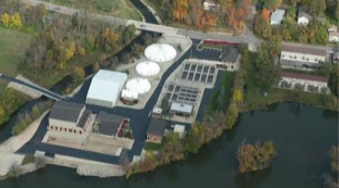zeeDENSE* Membrane Aerated Biofilm Reactor:
Super-Intensification of Activated Sludge
Super-Intensification of Activated Sludge
Veolia’s zeeDENSE MABR is a state-of-the-art application combining ZeeLung MABR & densification technology for activated sludge plants that need to expand both biological and hydraulic capacity by up to 50% while simultaneously improving nutrient removal.



